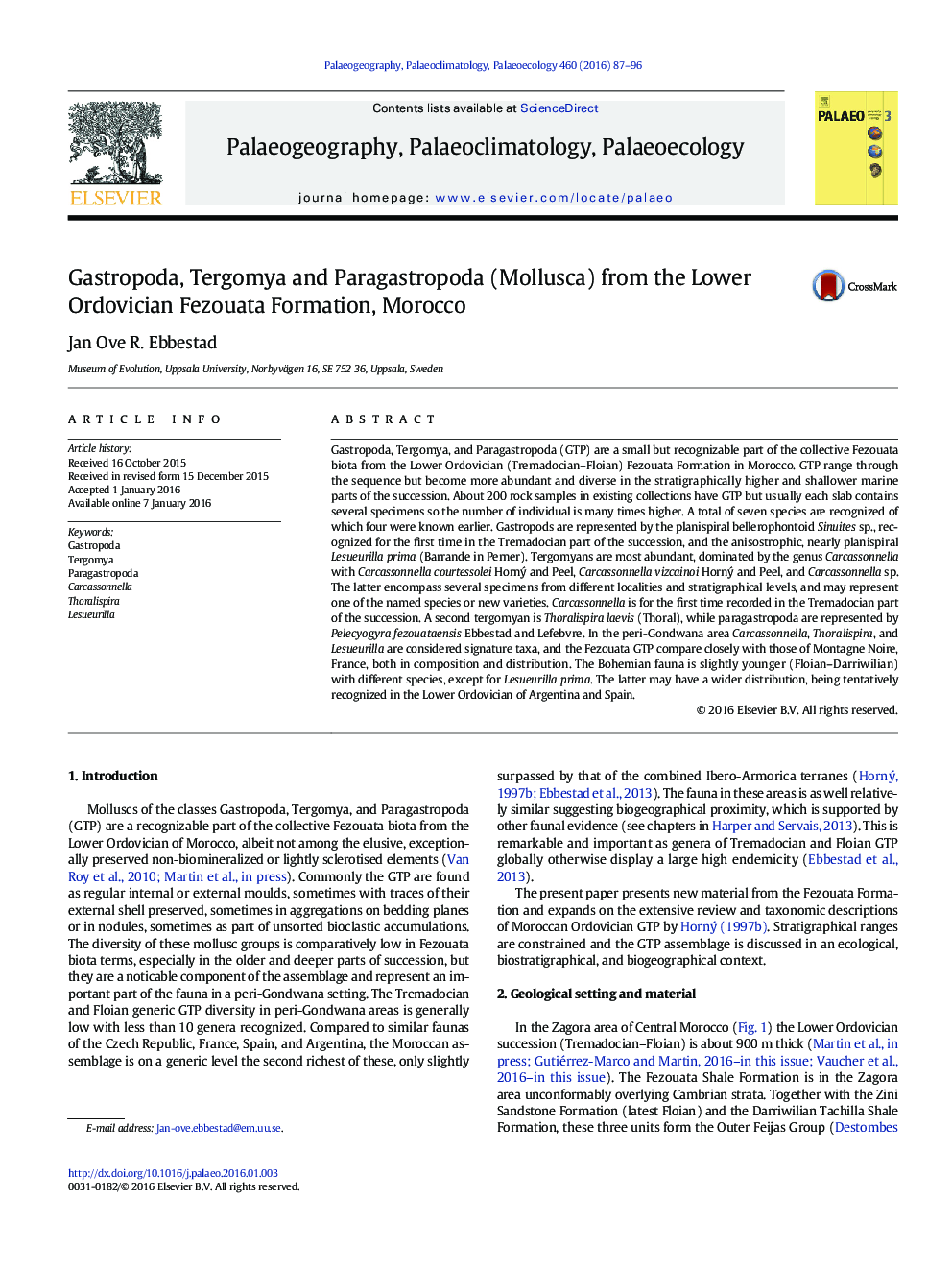| Article ID | Journal | Published Year | Pages | File Type |
|---|---|---|---|---|
| 4465565 | Palaeogeography, Palaeoclimatology, Palaeoecology | 2016 | 10 Pages |
•Seven species of Gastropoda, Tergomya, and Paragastropoda are known from the Fezouata biota.•Sinuites sp., Carcassonnella vizcainoi Horný and Peel, and specimens of Carcassonnella sp. are recognized for the first time in the Fezouata Formation.•The stratigraphical range is extended downwards compared to earlier studies, recognizing the gastropods Sinuites and Lesueurilla in the early Floian (Fl1, Fl2) and the tergomyan Thoralispira and Carcassonnella in the early Floian (Fl 1), and Tremadocian respectively.•The deeper part of the succession holds abundant specimens of a diminutive Carcassonnella sp., and the occurrence is considered to reflect ecological separation.•Biogeographically and stratigraphically the Fezouata GTP are most similar to the fauna in Montagne Noire, southern France.
Gastropoda, Tergomya, and Paragastropoda (GTP) are a small but recognizable part of the collective Fezouata biota from the Lower Ordovician (Tremadocian–Floian) Fezouata Formation in Morocco. GTP range through the sequence but become more abundant and diverse in the stratigraphically higher and shallower marine parts of the succession. About 200 rock samples in existing collections have GTP but usually each slab contains several specimens so the number of individual is many times higher. A total of seven species are recognized of which four were known earlier. Gastropods are represented by the planispiral bellerophontoid Sinuites sp., recognized for the first time in the Tremadocian part of the succession, and the anisostrophic, nearly planispiral Lesueurilla prima (Barrande in Perner). Tergomyans are most abundant, dominated by the genus Carcassonnella with Carcassonnella courtessolei Horný and Peel, Carcassonnella vizcainoi Horný and Peel, and Carcassonnella sp. The latter encompass several specimens from different localities and stratigraphical levels, and may represent one of the named species or new varieties. Carcassonnella is for the first time recorded in the Tremadocian part of the succession. A second tergomyan is Thoralispira laevis (Thoral), while paragastropoda are represented by Pelecyogyra fezouataensis Ebbestad and Lefebvre. In the peri-Gondwana area Carcassonnella, Thoralispira, and Lesueurilla are considered signature taxa, and the Fezouata GTP compare closely with those of Montagne Noire, France, both in composition and distribution. The Bohemian fauna is slightly younger (Floian–Darriwilian) with different species, except for Lesueurilla prima. The latter may have a wider distribution, being tentatively recognized in the Lower Ordovician of Argentina and Spain.
